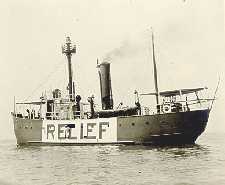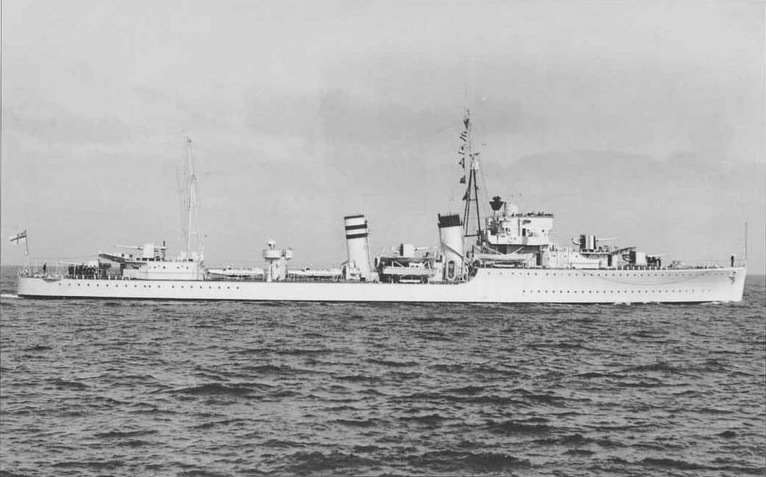|
HMS Havock
Six vessels of the Royal Navy have been named HMS ''Havock'', including: * was a 12-gun gun-brig launched in 1805. She became a lightvessel in 1821, a watch vessel in 1834 and was broken up in 1859. * was a mortar vessel launched in 1855, and renamed ''MV5'' later that year. She became a customs watch vessel designated ''WV27'', and was broken up in 1874. * was an wooden screw gunboat launched in 1856 and sold in 1870. * was a launched in 1893, becoming the first design of torpedo boat destroyers in the Navy. She was broken up in 1912. * HMS ''Havock'' was to have been a destroyer, but was renamed before being launched in 1913. * was an H-class destroyer launched in 1936 and wrecked in 1942 off Kelibia Kelibia (Kélibia) ( '), often referred to as Klibia or Gallipia by European writers, is a coastal town on the Cap Bon peninsula, Nabeul Governorate in the far north-eastern part of Tunisia. Its sand beaches are considered some of the finest in .... See also * HMS ''Havic ... [...More Info...] [...Related Items...] OR: [Wikipedia] [Google] [Baidu] |
Royal Navy
The Royal Navy (RN) is the naval warfare force of the United Kingdom. It is a component of His Majesty's Naval Service, and its officers hold their commissions from the King of the United Kingdom, King. Although warships were used by Kingdom of England, English and Kingdom of Scotland, Scottish kings from the early Middle Ages, medieval period, the first major maritime engagements were fought in the Hundred Years' War against Kingdom of France, France. The modern Royal Navy traces its origins to the English Navy of the early 16th century; the oldest of the British Armed Forces, UK's armed services, it is consequently known as the Senior Service. From the early 18th century until the World War II, Second World War, it was the world's most powerful navy. The Royal Navy played a key part in establishing and defending the British Empire, and four Imperial fortress colonies and a string of imperial bases and coaling stations secured the Royal Navy's ability to assert naval superior ... [...More Info...] [...Related Items...] OR: [Wikipedia] [Google] [Baidu] |
Brig
A brig is a type of sailing vessel defined by its rig: two masts which are both square rig, square-rigged. Brigs originated in the second half of the 18th century and were a common type of smaller merchant vessel or warship from then until the latter part of the 19th century. In commercial use, they were gradually replaced by Fore-and-aft rig, fore-and-aft rigged vessels such as Schooner, schooners, as owners sought to reduce crew costs by having rigs that could be handled by fewer men. In Royal Navy use, brigs were retained for training use when the battle fleets consisted almost entirely of iron-hulled steamships. Brigs were prominent in the coastal coal trade of British waters. 4,395 voyages to London with coal were recorded in 1795. With an average of eight or nine trips per year for one vessel, that is a fleet of over 500 Collier (ship), colliers trading to London alone. Other ports and coastal communities were also served by colliers trading to Britain's coal ports. In the ... [...More Info...] [...Related Items...] OR: [Wikipedia] [Google] [Baidu] |
Lightvessel
A lightvessel, or lightship, is a ship that acts as a lighthouse. It is used in waters that are too deep or otherwise unsuitable for lighthouse construction. Although some records exist of fire beacons being placed on ships in Roman times, the first modern lightship was located off the Nore sandbank at the mouth of the River Thames in London, England, by its inventor Robert Hamblin in 1734. Lightships have since been rendered obsolete by advancing lighthouse construction techniques, and by LANBY, large automated navigation buoys. Construction The most important element of lightship design is a tall Mast (sailing), mast upon which to mount the light. Initially, these lights consisted of Oil lamp, oil lamps that were run up the mast and could be lowered for servicing, while later vessels carried fixed lamps which were serviced in place. As they became available, Fresnel lenses were used, and many vessels housed them in smaller versions of lighthouse lanterns. Some lightships ha ... [...More Info...] [...Related Items...] OR: [Wikipedia] [Google] [Baidu] |
Gunboat
A gunboat is a naval watercraft designed for the express purpose of carrying one or more guns to bombard coastal targets, as opposed to those military craft designed for naval warfare, or for ferrying troops or supplies. History Pre-steam era In the age of sail, a gunboat was usually a small undecked vessel carrying a single smoothbore cannon in the bow, or just two or three such cannons. A gunboat could carry one or two masts or be oar-powered only, but the single-masted version of about length was most typical. Some types of gunboats carried two cannon, or else mounted a number of swivel guns on the railings. The small gunboat had advantages: if it only carried a single cannon, the boat could manoeuvre in shallow or restricted areas – such as rivers or lakes – where larger ships could sail only with difficulty. The gun that such boats carried could be quite heavy; a 32-pounder for instance. As such boats were cheap and quick to build, naval forces favoured swarm ... [...More Info...] [...Related Items...] OR: [Wikipedia] [Google] [Baidu] |
Torpedo Boat
A torpedo boat is a relatively small and fast naval ship designed to carry torpedoes into battle. The first designs were steam-powered craft dedicated to ramming enemy ships with explosive spar torpedoes. Later evolutions launched variants of self-propelled Whitehead torpedoes. These were inshore craft created to counter both the threat of battleships and other slow and heavily armed ships by using speed, agility, and powerful torpedoes, and the overwhelming expense of building a like number of capital ships to counter an enemy. A swarm of expendable torpedo boats attacking en masse could overwhelm a larger ship's ability to fight them off using its large but cumbersome guns. A fleet of torpedo boats could pose a similar threat to an adversary's capital ships, albeit only in the coastal areas to which their small size and limited fuel load restricted them. The introduction of fast torpedo boats in the late 19th century was a serious concern to the era's naval strategists, i ... [...More Info...] [...Related Items...] OR: [Wikipedia] [Google] [Baidu] |
HMS Linnet (1913)
HMS ''Linnet'' was a destroyer that served with the Royal Navy during the First World War. Launched on 16 August 1913 as HMS ''Havock'', the ship was renamed on 30 September under an Admiralty order to become one of the first destroyers in a class named alphabetically. This convention subsequently became the norm. On commissioning, the vessel joined the Third Destroyer Flotilla and operated as part of the Harwich Force. The destroyer was first commanded by Commander Loftus Jones who named his daughter Linnette after the ship. During the War, the destroyer took part in the Battle of Heligoland Bight in 1914, and escorted minelayers on missions to lay mines. It was during one the latter missions that the ship was nearly hit by a gun hurled from the stricken minelayer . With the cessation of hostilities, the ship was placed in reserve and sold to be broken up on 4 November 1921. Design and development ''Linnet'' was one of twenty-two L- or destroyers built for the Royal Navy, ... [...More Info...] [...Related Items...] OR: [Wikipedia] [Google] [Baidu] |
G And H-class Destroyer
The G- and H-class destroyers were a group of 18 destroyers built for the Royal Navy during the 1930s. Six additional ships being built for the Brazilian Navy when World War II began in 1939 were purchased by the British and named the ''Havant'' class. The design was a major export success with other ships built for the Argentine Navy, Argentine and Royal Hellenic Navy, Royal Hellenic Navies. They were assigned to the Mediterranean Fleet upon completion and enforced the Non-intervention in the Spanish Civil War, Non-Intervention Agreement during the Spanish Civil War of 1936–1939. Most ships were recalled home or were sent to the North Atlantic from October to November 1939, after it became clear that Kingdom of Italy#Fascist regime (1922–1943), Fascist Italy was not going to intervene in World War II. Then they began to escort convoys and patrol for German submarines and commerce raiders. Two ships were lost to German naval mine, mines in the first six months of the war. ... [...More Info...] [...Related Items...] OR: [Wikipedia] [Google] [Baidu] |
Kelibia
Kelibia (Kélibia) ( '), often referred to as Klibia or Gallipia by European writers, is a coastal town on the Cap Bon peninsula, Nabeul Governorate in the far north-eastern part of Tunisia. Its sand beaches are considered some of the finest in the Mediterranean. History Known in Roman times as Clypia or Clypea, () the town was founded by the Carthaginians as the fortified town of Aspis () in the 5th century BC. The Siege of Aspis in 255BC was the first battle of the First Punic War fought on African soil. Clypea was also the seat of an ancient Christian bishopric. At the Council of Carthage (411), which brought together Catholic and Donatist bishops, Clypea was represented by Bishop Leodicius and the Donatist Geminius. Aurilius was one of the bishops whom the Arian Vandal king Huneric summoned to Carthage in 484 and then exiled. Two other bishops of Clypia took part in the Council of Carthage (525) (Bishop Crescentius) and Council of Carthage (645) (Bishop Stephanus). ... [...More Info...] [...Related Items...] OR: [Wikipedia] [Google] [Baidu] |
Dutch Sloop Havik (1784)
The Dutch ship sloop ''Havik'' was launched in 1784 and served in the Batavian Navy. The British captured her in 1796 at the capitulation of Saldanha Bay. She then served briefly in the Royal Navy as HMS ''Havick'' (or ''Havik'', or ''Havock'') before she was wrecked in late 1800. Dutch service and capture ''Havik'' was a ship sloop with a quarterdeck, built at Amsterdam in 1784 for the Admiralty of Amsterdam under the 8th Charter. At Saldanha Bay a squadron of the Batavian Navy, under the command of Rear-Admiral Engelbertus Lucas, surrendered without a fight to a Royal Navy squadron under the command of Vice-Admiral George Elphinstone at Saldanha Bay on 17 August 1796. ''Havik'' was one of the vessels that the British captured. At the time of her capture, ''Havik'', under the command of Lieutenant Pieter Bessemer (or Bezemer), was armed with 18 guns and had a crew of 76 men. Commander Charles Ekins was appointed to , supposed to be at the Cape of Good Hope, but found, on his ... [...More Info...] [...Related Items...] OR: [Wikipedia] [Google] [Baidu] |




